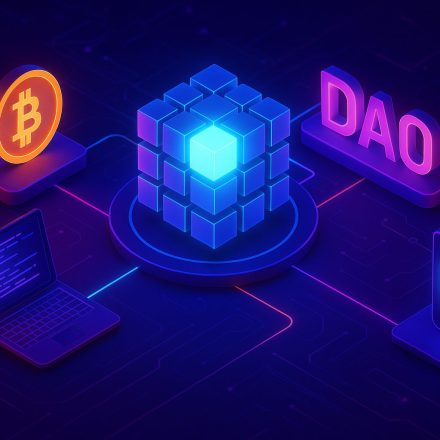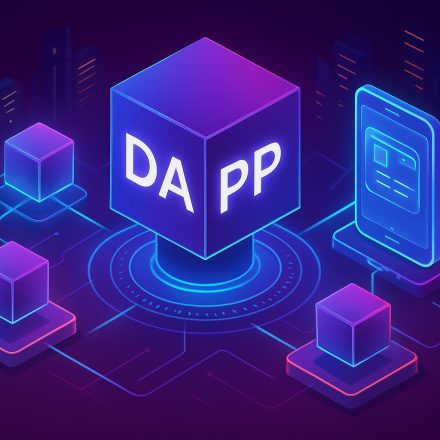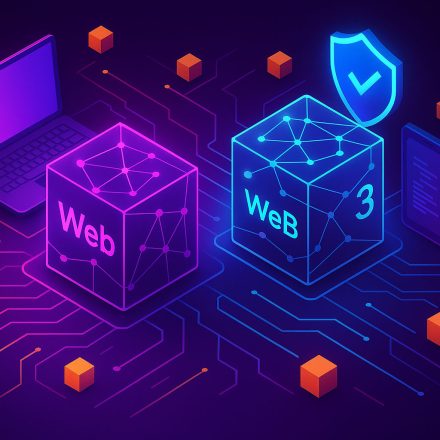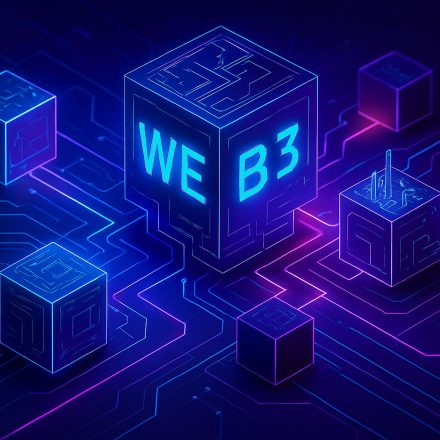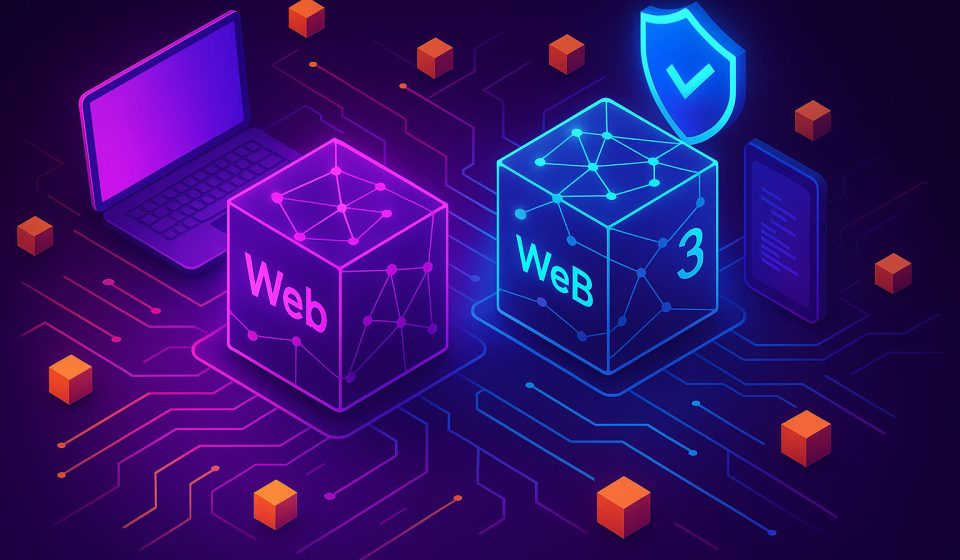
🌐 How Web3 Differs from Web2: A Complete Breakdown
As the internet continues to evolve, a fundamental shift is taking place — from Web2 to Web3. But what does that really mean? And how Web3 differs from Web2 is a question that more developers, users, and investors are asking every day.
Table Of Content
- 🔄 Web1 → Web2 → Web3: A Quick Timeline
- 🕸️ Web1 (1990s – early 2000s): The Static Web
- 🌍 Web2 (2005 – Present): The Social Web
- 🧩 Web3 (Emerging): The Decentralized Web
- 🧠 Key Differences: How Web3 Differs from Web2
- 1. Ownership vs. Access
- 2. Centralization vs. Decentralization
- 3. Monetization Models
- 4. Identity and Authentication
- 5. Censorship Resistance
- 🧰 Web3 Tech Stack: What Powers the Decentralized Web
- 🌍 Examples of Web3 in Action
- ⚠️ Web3 Challenges
- 🔗 Learn More
- 📝 Final Thoughts
In this article, we’ll break down the key differences between Web2 and Web3, explain why decentralization matters, and help you understand how this transformation is changing the way we use the internet.
At BlockchainInsights.org, we’re here to make the next era of the internet easier to understand — layer by layer.
🔄 Web1 → Web2 → Web3: A Quick Timeline
To understand how Web3 differs from Web2, it helps to look at the evolution of the web.
🕸️ Web1 (1990s – early 2000s): The Static Web
- Read-only websites
- No user-generated content
- Centralized servers and limited interactivity
🌍 Web2 (2005 – Present): The Social Web
- Interactive platforms (Facebook, YouTube, Twitter)
- User-generated content becomes dominant
- Platforms profit from user data and attention
- Centralized control of data, identity, and algorithms
🧩 Web3 (Emerging): The Decentralized Web
- Built on blockchain and peer-to-peer technologies
- Users own their data, identities, and digital assets
- Open protocols and decentralized infrastructure
- Community-driven development
🧠 Key Differences: How Web3 Differs from Web2
Here are the most important ways in which Web3 differs from Web2:
1. Ownership vs. Access
- Web2: You use platforms like Instagram or Spotify, but you don’t own your content, followers, or profile. Your data is stored and monetized by centralized companies.
- Web3: Your identity, data, and assets live in your wallet, not on someone else’s server. You control them and carry them across dApps.
2. Centralization vs. Decentralization
- Web2: Controlled by a few corporations (e.g., Google, Meta, Amazon). They decide who gets access, what content is visible, and how algorithms behave.
- Web3: Decentralized networks (like Ethereum or IPFS) remove single points of control. Power is distributed across protocols and communities.
3. Monetization Models
- Web2: Platforms monetize user data via ads, subscriptions, and selling attention. Creators rely on intermediaries.
- Web3: Value flows directly to users and creators via tokens, smart contracts, NFTs, and DAOs. You earn from participation — not just consumption.
Example: Platforms like Lens Protocol and Mirror let writers and creators monetize directly without relying on ad networks or sponsors.
4. Identity and Authentication
- Web2: You log in using emails, passwords, or social accounts — all managed by centralized servers. Data is fragmented across platforms.
- Web3: You use a crypto wallet (e.g., MetaMask) as a universal login, storing your identity, NFTs, and credentials across platforms.
5. Censorship Resistance
- Web2: Platforms can delete content, ban accounts, and alter algorithms — often without explanation.
- Web3: Content is hosted on decentralized platforms. Protocols like Arweave or IPFS ensure permanence. DAOs make moderation decisions collectively.
🧰 Web3 Tech Stack: What Powers the Decentralized Web
If you’re wondering how Web3 differs from Web2 under the hood, here’s a quick look at the key technologies:
- Blockchain – Immutable digital ledger (Ethereum, Solana, Avalanche)
- Smart Contracts – Automated agreements without intermediaries
- Decentralized Storage – IPFS, Arweave, Filecoin
- Decentralized Identity – ENS (Ethereum Name Service), DIDs
- Wallets – MetaMask, Phantom, WalletConnect
- DAOs – Governance by token holders, not executives
- dApps – Apps that run on-chain (e.g., Uniswap, Zora, Aave)
🌍 Examples of Web3 in Action
- Finance (DeFi): Uniswap, Aave, Curve
- Art & NFTs: OpenSea, Foundation, Zora
- Social Media: Farcaster, Lens Protocol
- Content Publishing: Mirror.xyz
- Gaming: Axie Infinity, Illuvium
- Storage: Filecoin, Arweave
- Governance: MakerDAO, Aragon
⚠️ Web3 Challenges
While Web3 holds promise, it’s not without issues:
- Usability is still a major barrier (wallets, gas fees, etc.)
- Scalability and transaction costs vary by chain
- Regulation is still catching up
- Risks from scams, hacks, and unaudited smart contracts
These are being addressed through UX improvements, L2 scaling, audits, and better onboarding tools.
🔗 Learn More
Check out our beginner’s intro to decentralization:
“What Is Web3? A Simple Introduction”
https://blockchaininsights.org/what-is-web3
External source:
“Web3: What It Is and Why It Matters” — Consensys
https://consensys.io/knowledge-base/web3/
📝 Final Thoughts
Understanding how Web3 differs from Web2 is more than a technical comparison — it’s a philosophical shift in how we build, own, and interact online.
Web3 empowers individuals with digital sovereignty, economic participation, and freedom from gatekeepers. Whether you’re a creator, developer, or curious user, the decentralized web is opening doors that Web2 could never offer.
At BlockchainInsights.org, we’re committed to helping you transition into this next phase of the internet — one protocol at a time.









